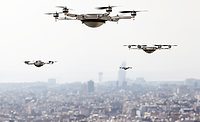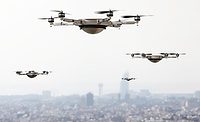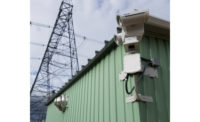Timeline of Counter-Drone Activity in the U.S. Government
How can enterprise security leaders protect their environments?

There are a number of legislative committees and groups working on counter drone legislation, evaluating existing technology and supporting the development of new technology. Here are some of the major highlights in counter drone research and legislation since the early 2000s.
-
2002 – Department of Defense begins conducting field exercises through, among other things, Black Dart, a yearly event that tests and further refines counter-drone technology.
-
2009 - The UAS Executive Committee is formed, incorporating five major government departments. This group is preparing recommendations for legislation that will determine rules of engagement around critical infrastructure points.
-
2016 - DHS sets up a new Program Executive Office (PEO) to encourage the use of drones and evaluate counter drone technology through testing programs, such as TACTIC.
-
2016 - The Federal Drone Advisory Committee (DAC) is announced on May 4th to provide an open venue for the FAA and key decision-makers supporting the safe introduction of Unmanned Aircraft Systems into the National Airspace System.
-
2016 - In July, The FAA receives funding for a Counter UAS pilot project around airports, and to ensure that CUAS technology does not interfere with airport operations.
-
2016 - Mitre, a non-profit that manages federally funded research and development centers, holds a competition in August centered on drone detection/neutralization technology in urban environments.
-
2017 - The Trump administration circulates draft legislation to congressional committees in May of this year and holds a classified briefing.
-
2017 - The FAA also forms the UAS Identification and Tracking Advisory Committee in May to advise the FAA on how to safely integrate drones and resolve the concerns of other stakeholders.
-
2017 - The Pentagon approves a classified policy in July allowing military bases to take action against drones violating airspace restrictions that are deemed a security threat. This is the first indication that the FAA will allow the disabling and/or shooting of drones in U.S. airspace. Portions of the policy were made public in August of this year.
All of these efforts are intended to increase the safety of our skies and the citizens of the U.S. At this time security managers and individuals are able to detect drones, locate the operator and then inform police if the behavior of the drone may endanger property or persons. (See FAA recommendations online at www.faa.gov) However, it is currently illegal to intercept a drone in any fashion. Definitive legislation that allows private, state and local operators of critical infrastructure to protect their facilities from drones is still a ways off.
Looking for a reprint of this article?
From high-res PDFs to custom plaques, order your copy today!








